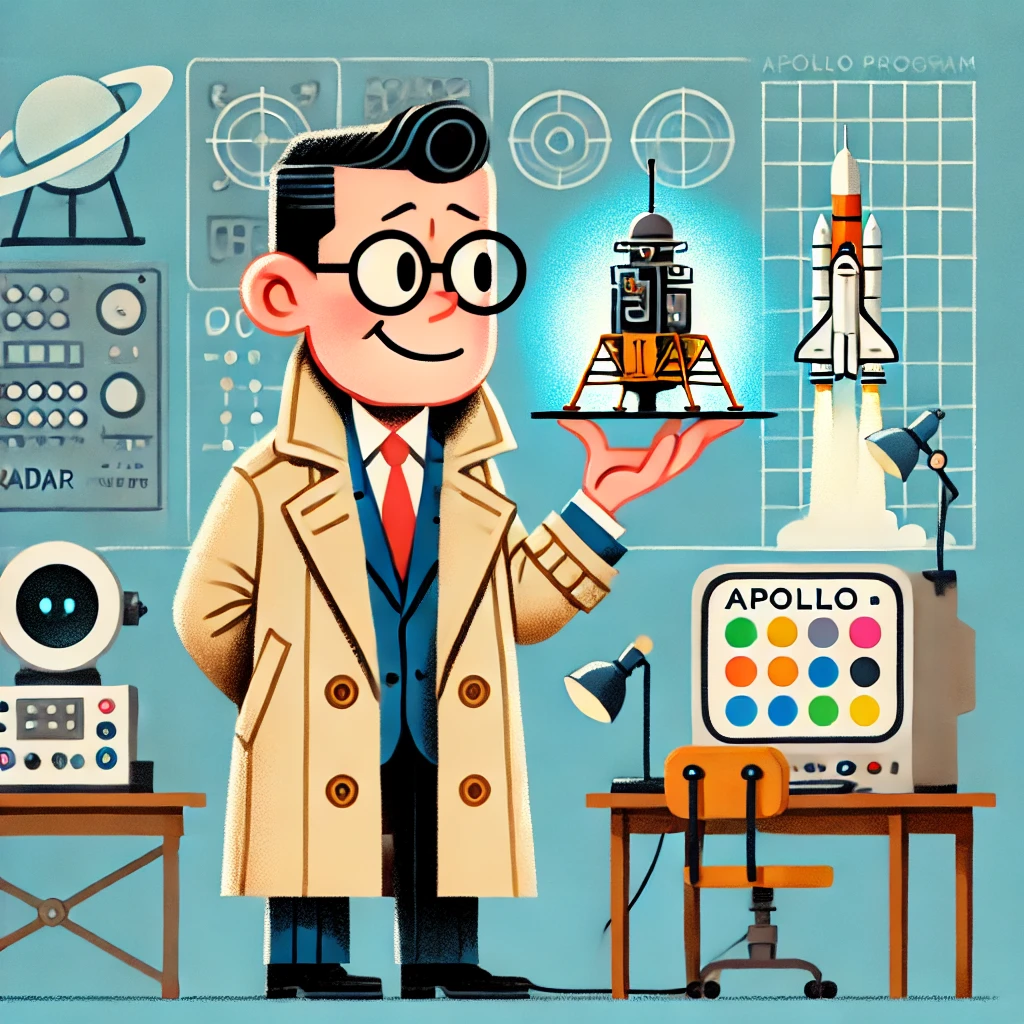DALL-E: Balancing Pride and Peril
Description: A image created to accompany the Onion Review written by Claude. Commentary by ChatGPT4o1.
Source: DALL-E via ChatGPT4o1
Tags:

Source: image created by prompting DALL-E with the book and a copy of the Onion review and request for an image to accompany the article.
The image depicts a whimsical, cartoon-style illustration of a mid-20th-century-inspired scene. At the center is an AI researcher wearing a trench coat and round glasses, standing with a mix of pride and apprehension. The researcher holds up a glowing miniature lunar module, symbolizing the Apollo program, as if offering it to the viewer. Their facial expression combines a confident smile with raised eyebrows, hinting at nervous excitement.
The background features simplified analog computers with glowing dials, a minimalist radar dish, and a cartoonish rocket launching into a starry sky. The overall setting evokes the mid-20th century, blending historical motifs with a lighthearted aesthetic. The color palette is soft but vibrant, using muted blues, grays, and yellows, with glowing highlights to draw attention to key elements. The scene balances humor and reverence, reflecting both the pride in humanity’s achievements and the subtle tension of their implications.
How the Image Captures the Themes of the Review
The image effectively captures the humor and subtle tension from the review without overwhelming the core themes by leaning into a cartoonish and approachable style. Key elements tie directly to the review’s content:
The Prompting Required to Achieve This Balance
The prompting evolved to emphasize the following:
Overall, these steps ensured the image visually complements the review, highlighting its themes of pride and nervous humor without overshadowing its satirical tone.